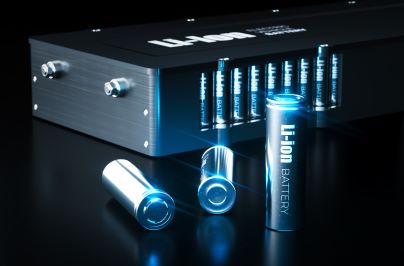On-line Electrochemical Mass Spectrometry (OEMS) is an advanced analytical technique that combines electrochemical methods with mass spectrometry. It enables real-time monitoring and analysis of evolved gases during electrochemical processes and is an extension of Differential Electrochemical Mass Spectrometry (DEMS). OEMS plays an important role in various scientific fields, offering valuable insights into reaction mechanisms, kinetics, and the behaviour of electroactive species. In this blog post, we will explore the fundamentals, applications, and advantages of OEMS.

What is On-line Electrochemical Mass Spectrometry?
OEMS is a technique that allows scientists to simultaneously measure a range of electrochemical paraments, such as current, potential, and charge, while identifying and quantifying the species involved in electrochemical reactions. This method has been widely used in gas analysis, understanding failure mechanisms, optimising electrochemical systems as well as in batteries, aiding in the development of strategies for enhanced performance and minimising the risk of damage.
Learn more about the history behind OEMS in our Electrochemistry Brochure.
However, before we move forward, it is worth mentioning that the OEMS analytical technique we use today was developed to improve upon the features of the original mass spectrometry method, first designed in 1971.1
How OEMS Works
An OEMS system is made up of several key components, including an electrochemical cell and a mass spectrometer. The electrochemical cell serves as the reaction vessel, where electrochemical processes take place. Simultaneously, the mass spectrometer detects and identifies the ions generated during these processes. During an OEMS experiment, the ion current corresponding to a specific species of interest is recorded parallel to the faradaic electrode, providing valuable insights into the electrochemical reactions occurring at the electrode-electrolyte interface.
Applications of OEMS
OEMS is a specialised analytical technique used in various scientific fields, including environmental monitoring and lithium-ion battery studies, because of its ability to analyse and provide comprehensive insight into reactions and their products in real-time.
Electrolysis
OEMS is used to monitor reactions that occur in electrolysis, especially when fuels other than hydrogen are used. Hydrogen used as fuel only produces water vapour, but other fuels produce waste products such as gas mixtures and carbon dioxide. By using OEMS to monitor these processes, scientists can analyse the byproducts and optimise conditions.
Fuel Cell Studies
Many reactions within fuel cells can be detrimental to their performance, including carbon corrosion, degradation, instability and overheating. Scientists can use OEMS to monitor real-time gas composition reactions, which helps them to optimise process conditions and improve safety levels.
Lithium-Ion Battery Development
Lithium-ion batteries (LIBs) are continuously being explored as an option for rechargeable batteries in electric vehicles, which is being pushed by the rising fossil fuel costs and government regulations on CO2 emissions.2 LIBs are recognised for their lightweight properties and power density, making them suitable for various applications. However, the safety issues surrounding LIBs include potential parasitic reactions and damage during electrical and mechanical processes, resulting in the need for mass spectrometry inspection solutions.3
OEMS with Hiden Analytical
Hiden Analytical offers a range of systems designed specifically for electrochemical applications, including the HPR-20 OEMS, a benchtop, or mobile cart-mounted module for analysing evolved gas species in electrochemistry. It is an innovative product that revolutionises the field of electrochemistry by facilitating the production of hydrocarbons from captured carbon dioxide while offering precise control over the entire process.
Our instruments provide researchers with powerful tools to gain insights and expand their knowledge in the field. With Hiden Analytical’s DEMS and OEMS systems, scientists can conduct precise and reliable analyses of electrochemical systems, contributing to advancements in various industries such as corrosion protection, environmental monitoring and LIBs.
Contact a member of Hiden Analytical today to learn more about OEMS or monitoring electrochemical reactions.

